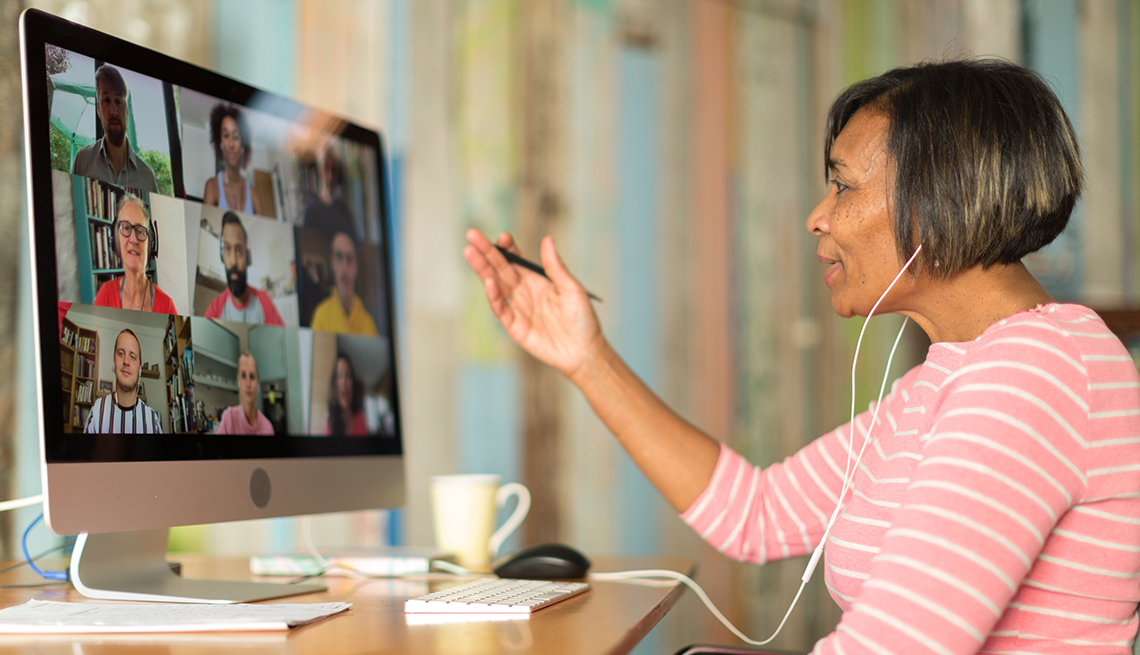AARP Hearing Center
It is not hard to believe most American family caregivers also have paying jobs. In fact, over 29.2 million — a whopping 61 percent — hold down a job (or two) while caring for a loved one or friend. For years, there have been growing concerns about those caregivers leaving or losing employment due to family caregiving responsibilities. Add to that the so-called “caregiving cliff” — a time in the 2020s when it is expected there will be more people who need care than people able to provide it. Then last year, along came the coronavirus and everything changed. The pandemic instantaneously shed light on the plight of working caregivers and accelerated the need to make major changes in how our society supports them.
All generations of working women are affected by the dual crises of caregiving without adequate support systems and weathering the impacts of the pandemic. Since the virus outbreak, women have left the workforce at disproportionate rates — four times that of men. When the U.S. economy lost 140,000 net jobs in December, every single position lost belonged to a woman. By comparison, men gained 16,000 positions. Clearly, more economic pain is on the horizon for businesses, women and families.
Between the talk of "lifetime consequences” to women's careers because of the pandemic and the long-anticipated caregiving cliff now sitting on our doorstep, this is the time for bold action. While policymakers and employers need to lead the charge, there are steps you can take as an individual to not just to survive this time but to help women workers thrive in the decades to come.
Security first in the short term
Women are struggling. It's intense to be a care provider, worker and raiser of children (or grandchildren) during a pandemic. Last fall — when I was wearing my caregiver, attorney and momma hats simultaneously — was a marathon for me. Those hats get heavy when you wear them all at once, and life can suddenly seem like a pain in the neck! While I can certainly relate to the feeling that “something's got to give,” it's disappointing, but not surprising, to learn that one in four women surveyed in corporate America was considering resigning or “downshifting” careers as the events of 2020 unfolded.
Last year wasn't my first time in the caregiving rodeo. During my first stint as a caregiver (for a parent with cancer), I lost my job when my family medical leave expired and I could not return to work full time. My mother was residing in a hospice house and at the end of her life when my medical leave hours ran out. Although I requested an accommodation, my employer said it was unable to “accommodate a reduced schedule due to client needs.” It was a financial catastrophe and a setback that my family struggled greatly to recover from.
In the 10 years since, workplaces have become more open to the plight of caregivers. And in just the past five years, workplace benefits and attention to caregiver-employee needs have increased significantly nationwide.
You may not feel like you have options — I understand that completely. In the year I cared for my mother, my thoughts were: “If not me, then who?” and “No one will care for her like I do.” But I implore all working caregivers now to explore every available option before considering a workforce departure. Be flexible in your thinking about what you can accomplish — and about what you can put in someone else's hands.
Understand your employer's work policies, benefits
Understanding your rights and knowing what policies and accommodations your workplace offers is step one. If so-called respite care hours are provided, use them. If your employee assistance program offers a care coordination service, delegate to it. If flexible hours are an option, modify your schedule. And it's so important to talk to your supervisor about your situation and document all your conversations on the subject. At least one in three employed caregivers says that their supervisor is unaware that they provide care. Supervisors and managers cannot empathize and respond to the challenges you face unless they know what you're experiencing. Be transparent and clear about what would help you perform better at work and at home.




































































